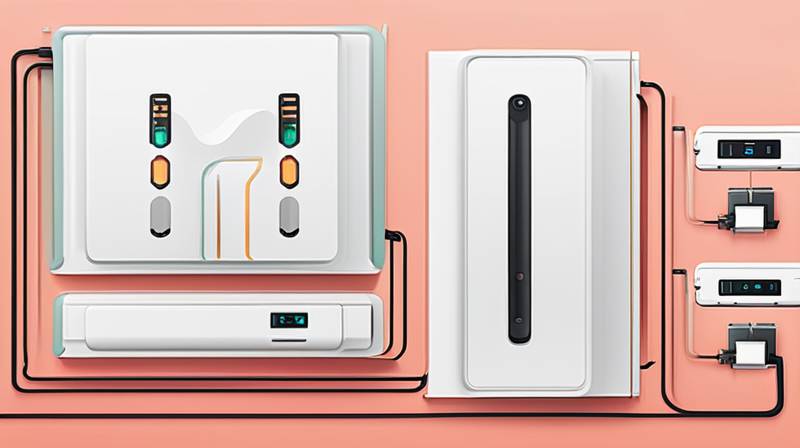
Can Tesla Powerwall be connected to existing battery systems? Yes, it can be connected, 1. Compatibility concerns exist, 2. Existing systems must be assessed for integration, 3. Professional installation recommended, 4. Benefits include energy efficiency and redundancy. Specifically, while Tesla Powerwall can be integrated with existing battery systems, it is crucial to evaluate the compatibility of the technologies involved. This assessment may affect performance, functionality, and grid interaction if not properly managed. It is advisable to collaborate with a qualified installer who can conduct a thorough evaluation of the existing setup and provide guidance on achieving optimal integration.
1. COMPATIBILITY CONCERNS
When considering whether the Tesla Powerwall can be integrated into existing battery systems, it is essential to recognize the various technology standards and compatibility issues. Tesla’s ecosystem heavily relies on advanced technology that often includes proprietary software and hardware, which may not align seamlessly with older battery systems. Older systems may employ different battery chemistries or operational protocols that could hinder the Powerwall’s performance.
A thorough evaluation of both the existing battery configurations and the Tesla Powerwall’s specifications is necessary prior to beginning an installation. This examination often encompasses critical factors such as battery voltage, current ratings, and communication protocols. If mismatches arise, the integration could lead to inefficiencies, potential damage, or even system failures. Thus, a meticulous compatibility check sets the foundation for successful operation between both systems.
2. ASSESSING EXISTING SYSTEMS
Before integrating a Tesla Powerwall, scrutinizing the performance and specifications of current battery systems is vital. This process typically includes an assessment of the battery’s age, health, and remaining capacity. Older systems may have diminished performance and could create additional drawbacks if connected to a modern Powerwall.
Evaluators must also consider the configuration of the existing system, such as whether it is a stand-alone setup or part of a larger energy solution. Discovering the possible limitations of these configurations assists in discerning the best method for connecting the Powerwall. For instance, some older systems may lack advanced grid-responsive features, which are essential for optimizing the performance of Tesla’s technology, ultimately impacting the overall energy efficiency of the combined system.
3. PROFESSIONAL INSTALLATION RECOMMENDED
Engaging a professional installer experienced with both the Tesla Powerwall and existing battery systems is crucial for a successful integration process. Professionals possess in-depth knowledge about the nuances involved in connecting various technologies and can provide essential insights into achieving the best performance.
Installation generally encompasses extensive planning and troubleshooting. Professional technicians analyze the electrical system and ensure that all components meet both safety and performance standards. In some cases, modifications to the existing battery or electrical system may be required, further emphasizing the need for expertise. A well-executed installation can facilitate enhanced energy independence, making it a valuable investment for property owners.
4. BENEFITS OF INTEGRATION
Integrating a Tesla Powerwall with pre-existing battery systems offers multiple advantages for energy efficiency and reliability. One of the primary benefits is achieving a more comprehensive energy storage solution. By combining systems, property owners can maximize their ability to store excess energy produced during the day, especially if supplemented by solar panels.
Moreover, integrating different batteries may increase the overall redundancy of the energy system. Should one component fail, the other can provide sufficient backup, reducing downtime and ensuring that energy supply remains reliable. Additionally, advanced Tesla technology can enhance the operation of older systems by optimizing energy usage, improving overall performance, and potentially increasing the lifespan of all connected components, thereby yielding long-term savings.
5. FREQUENTLY ASKED QUESTIONS
IS THE TESLA POWERWALL COMPATIBLE WITH ALL TYPES OF BATTERY SYSTEMS?
While Tesla Powerwall can connect to various battery systems, it is not universally compatible. The efficiency and success of integration largely depend on the specific battery chemistry, voltage ratings, and system configurations in place. Different types of batteries may have distinct operational protocols, and significant compatibility issues can arise if the existing system is outdated or lacks the required functionalities. Therefore, conducting a compatibility assessment with a professional installer is essential to ensure a successful installation and optimal performance.
WHAT ARE THE COST IMPLICATIONS OF INTEGRATING A TESLA POWERWALL INTO EXISTING SYSTEMS?
Cost considerations for integrating a Tesla Powerwall with existing battery systems can vary significantly based on multiple factors. Initial costs may include the purchase price of the Powerwall, installation fees, and potential upgrades to the existing system. Additional expenses might arise from necessary compatibility assessments and adjustments needed for a seamless connection. It is advisable to obtain comprehensive quotes and analyze both short-term and long-term financial implications to determine the most financially viable path forward. Cost-effectiveness is a critical factor when evaluating the overall benefits of integration.
HOW CAN I MAXIMIZE THE PERFORMANCE OF A CONNECTED TESLA POWERWALL SYSTEM?
To enhance the performance of a connected Tesla Powerwall system, users should consider implementing energy management strategies, utilizing smart home technologies for optimizing energy consumption, and scheduling energy usage to take advantage of peak times for solar energy production. Regular maintenance and performance evaluations are crucial as well, as they help identify potential inefficiencies or issues in the system. Additionally, staying informed about firmware updates and advancements in battery technology allows users to adapt their systems efficiently to maintain peak performance.
Maximizing the functionality of an integrated energy system ultimately relies on ongoing diligence and proactive management.
Tesla Powerwall’s compatibility and integration with existing battery systems hold significant promise for enhancing energy efficiency and resilience. A thorough analysis of the existing setup is crucial for effective implementation. Collaboration with professionals ensures that compatibility concerns are appropriately addressed, laying the groundwork for a reliable energy storage solution. The integration of modern technology with older systems not only fuels sustainability efforts but also fosters energy independence, contributing to long-term savings and reliability. By understanding the potential for integration, as well as the associated costs and performance optimization strategies, property owners can make informed decisions that resonate with their energy goals.
Original article by NenPower, If reposted, please credit the source: https://nenpower.com/blog/can-tesla-powerwall-be-connected-to-existing-battery-systems/


